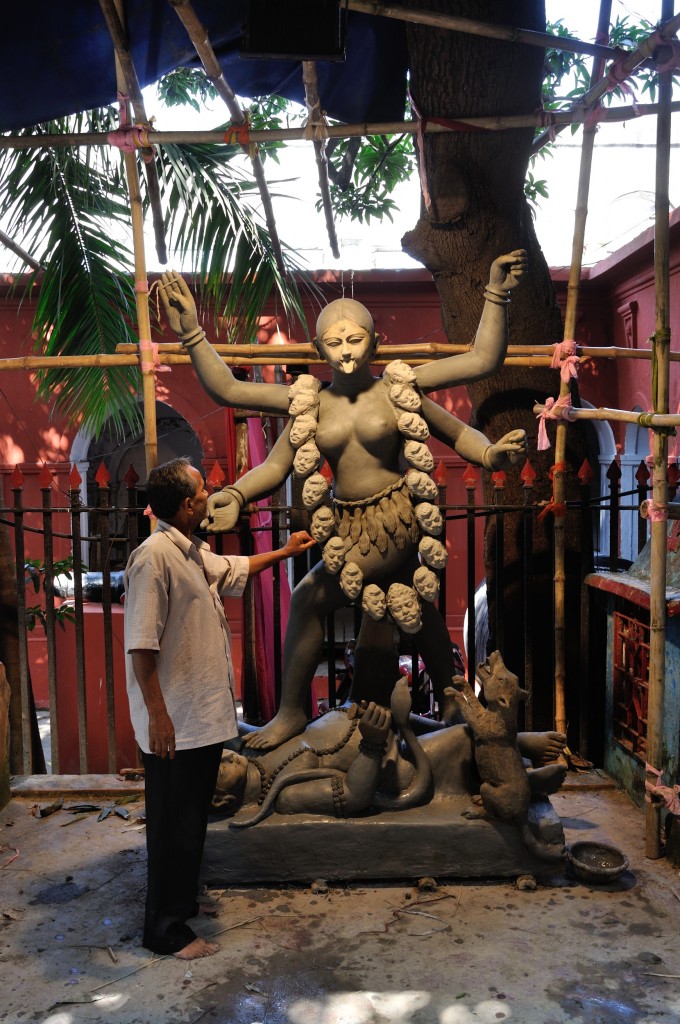Wow. My first full day at home in Santa Cruz, CA, the first thing that I noticed was the quiet. Compared to the bell-clanging, horn-honking, engine-sputtering, brake-squealing hustle-bustle of Kolkata’s 4.5 million human residents, plus umpteen million cars, motorcycles, auto-rickshaws, crows, dogs, cats, goats, and squirrels, Santa Cruz (pop. about 64,000) is practically a ghost town. This afternoon, just a few waves are lapping the sand at Seabright Beach, and if I listen really closely, I can hear the barking of a couple of the sea lions hanging out underneath the Santa Cruz Wharf, more than a mile away. At the end of next month, after Memorial Day, the tourists will take over. Even then the resulting increase in busyness could never be compared to the likes of Kolkata.
Two weeks before I left, as I was desperately searching for packaging materials, I also started to emotionally process that I would be leaving Kolkata after being there for the better part of seven months. A great part of me couldn’t wait to come home!! Yet, I knew that as soon as I arrived home, another, equal, part of me would be missing Kolkata.
There are the obvious things that I welcome about being home — my husband, cats, garden, studio, being able to bite into an apple without peeling it first, and eating raw, leafy green salads without a detailed, rigorous rinsing regimen. And having my truck there for me to drive, wherever, whenever.
This was my fifth visit to India. The first three relatively short visits were as a tourist, during the late 80’s – late 90’s. The fourth visit was as an artist-in-residence at Sanskriti Kendra in 2011, plus a little traveling. This time was very different. In seven months, I made many friends and developed a rhythm of living life there which made leaving so bittersweet. There’s so much to miss about Kolkata and its vibrant, teeming culture — rather than listing it all, I prefer to resolve to return in the future. And I will.
Meanwhile, I’m back and there’s so much to do! Besides the post-grant Fulbright paperwork and the ever-present house and garden projects, what I’m looking forward to the most is diving back into the studio and integrating all of these incredibly rich experiences into my work, both permanent and temporary. My experiences with Elements and Ek Tara have motivated me to seek more partners for collaborative works. Any ideas? Please contact me at cynthiasiegel@msn.com.





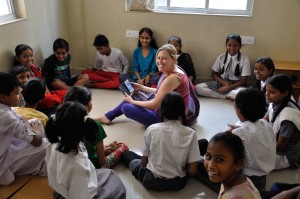

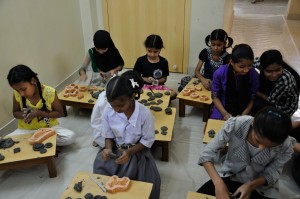

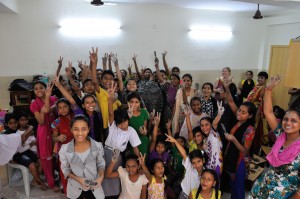








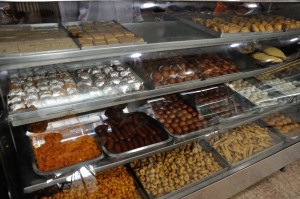
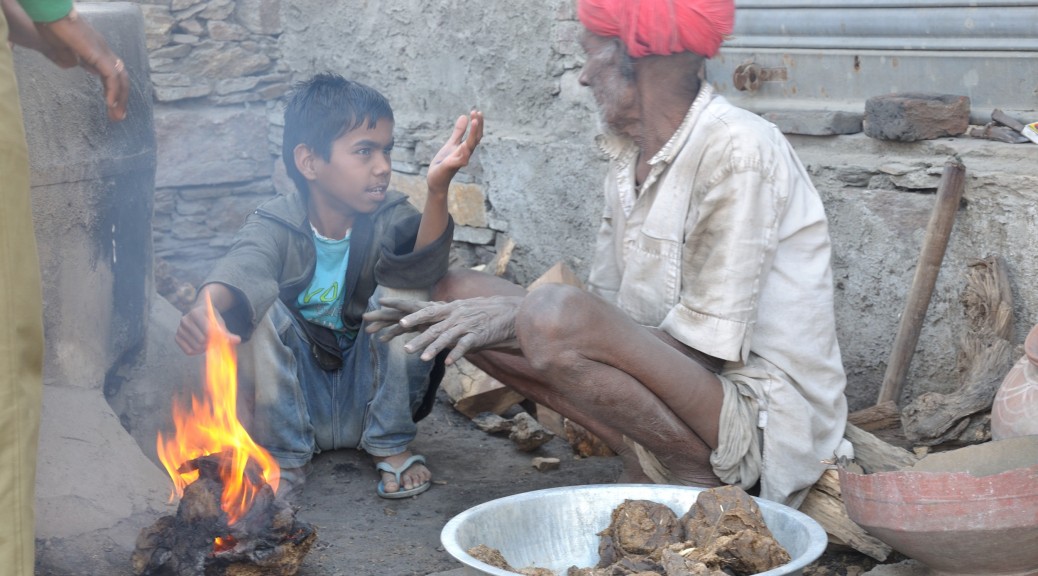






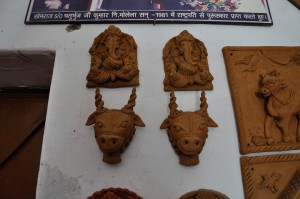




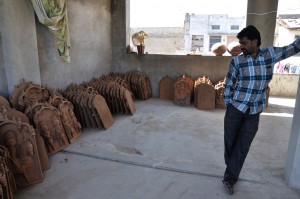

 The forms are made using a combination of slabs and pinching. As many areas as possible are left open to encourage air circulation; examples in this piece are the crown and underneath the body of the horse. The finer details are made by impressing with tools, or by adding small pieces of clay. Cutting or carving into the clay would be difficult with the heavily fibrous consistency of the clay body.
The forms are made using a combination of slabs and pinching. As many areas as possible are left open to encourage air circulation; examples in this piece are the crown and underneath the body of the horse. The finer details are made by impressing with tools, or by adding small pieces of clay. Cutting or carving into the clay would be difficult with the heavily fibrous consistency of the clay body.


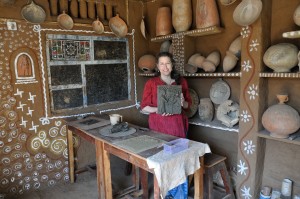



















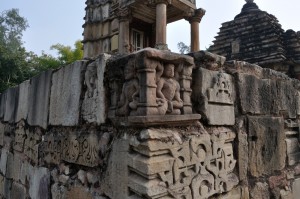 Most of the temples have had some sort of reconstruction of over the last few hundred years. The platform for this little temple was created with what looks like portions from many different temples, giving the effect of sculptural collage.
Most of the temples have had some sort of reconstruction of over the last few hundred years. The platform for this little temple was created with what looks like portions from many different temples, giving the effect of sculptural collage.


























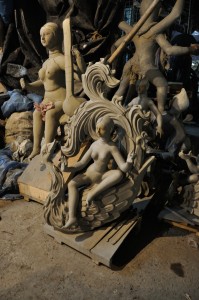


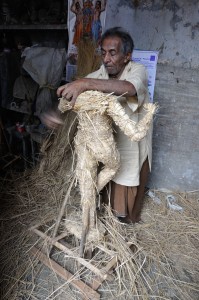
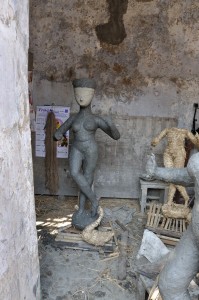











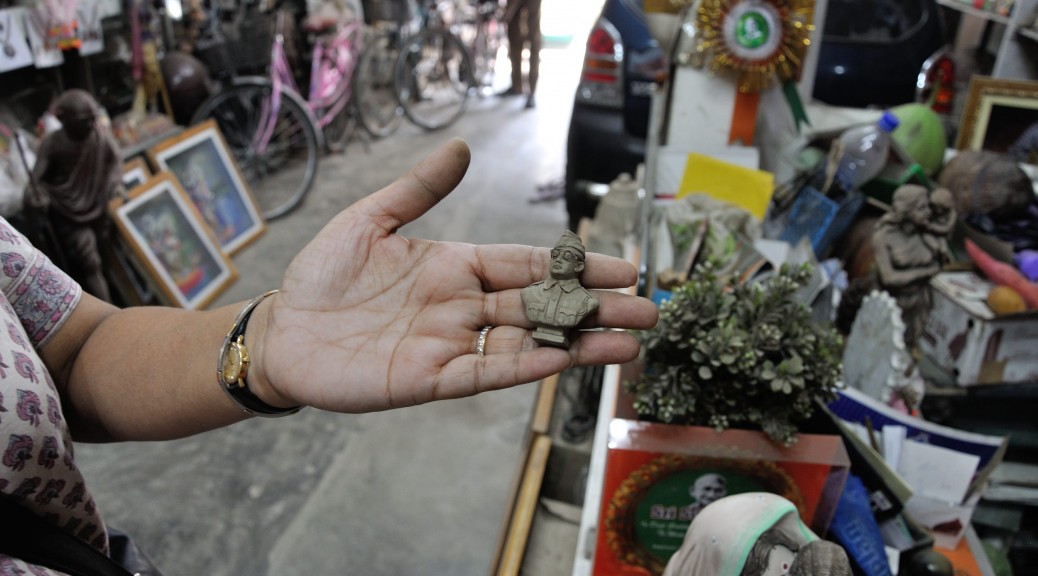
 Subir Pal’s showroom with cabinet of narrative clay works
Subir Pal’s showroom with cabinet of narrative clay works His workshop
His workshop
 Subir Pal with work in process
Subir Pal with work in process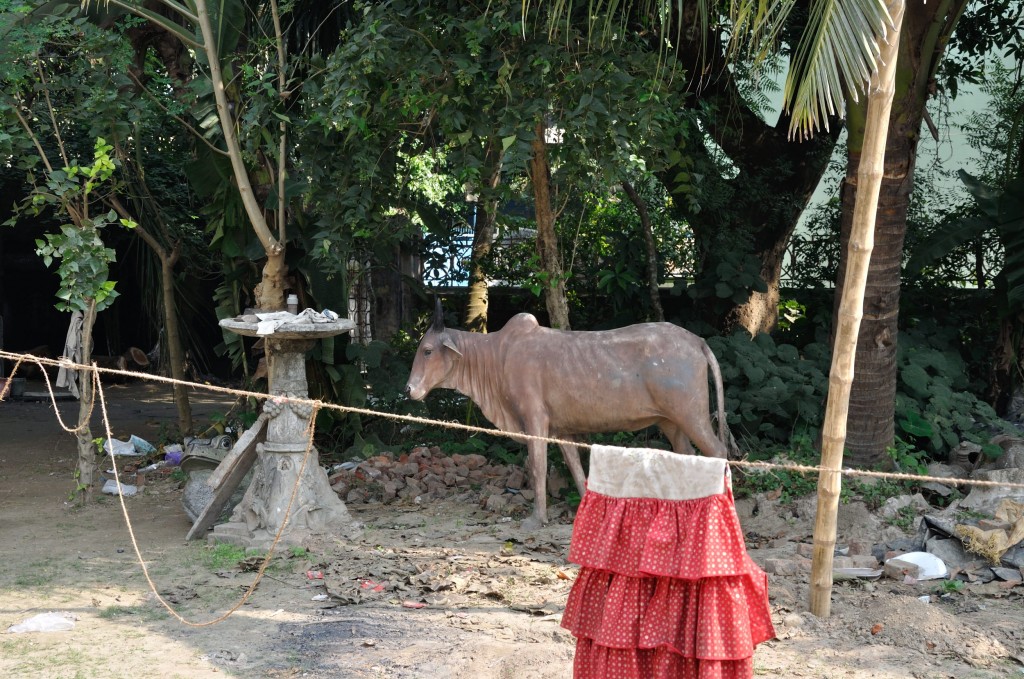


 These minatures are really amazing!
These minatures are really amazing!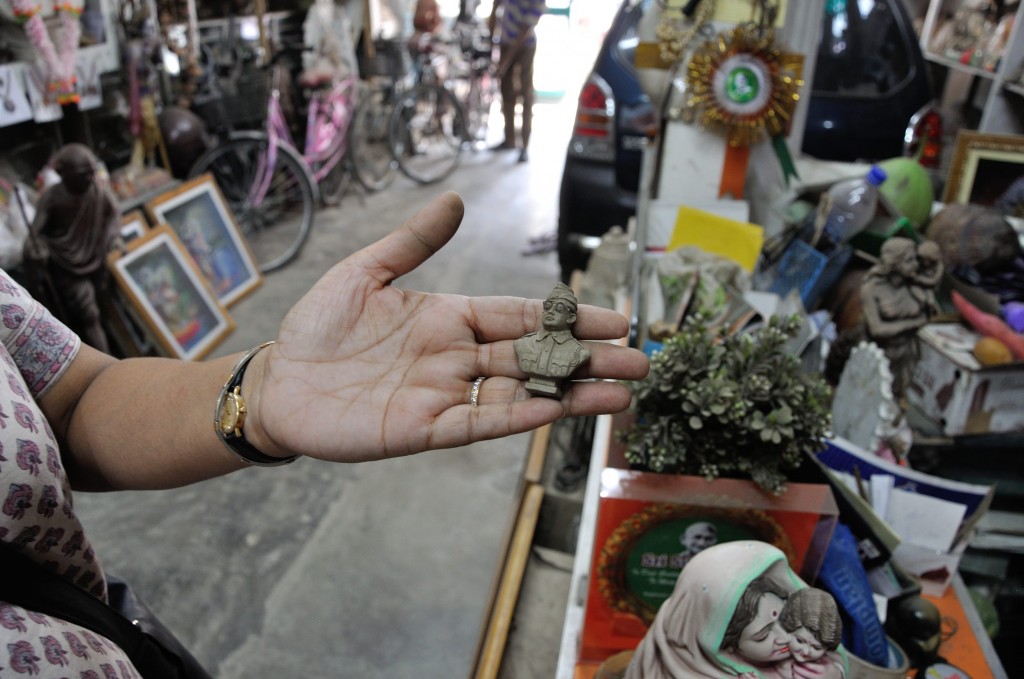
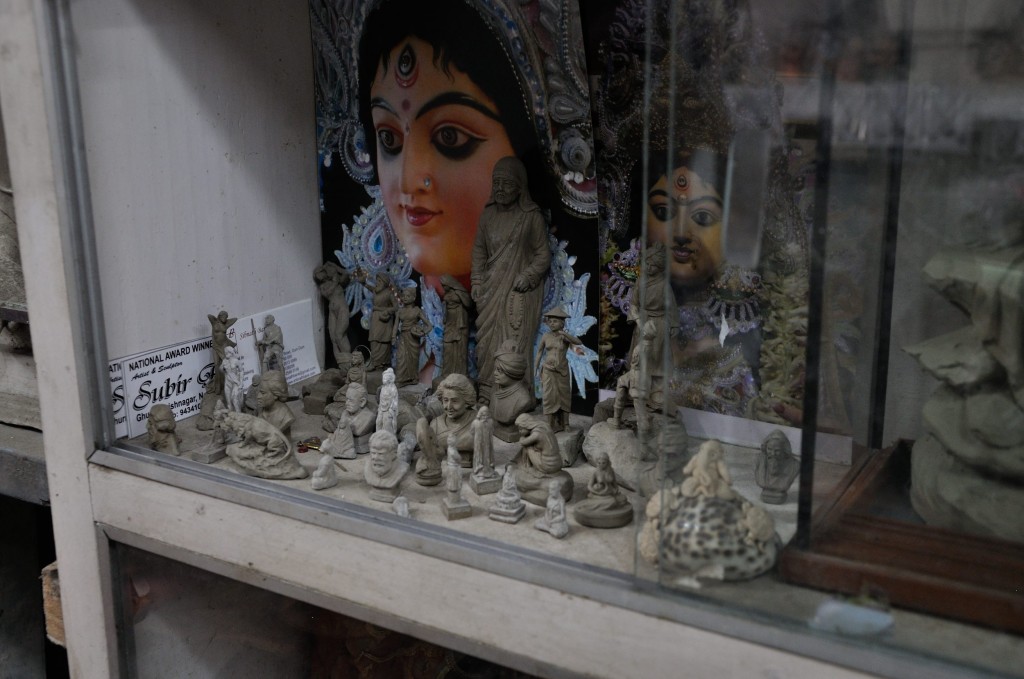

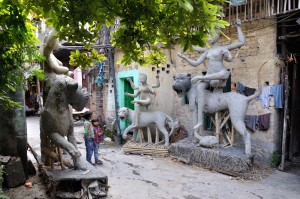








 her very active gesture of stomping on her consort Lord Shiva (other interpretations are that of accidentally doing so, and also that her foot on his body calms her anger).
her very active gesture of stomping on her consort Lord Shiva (other interpretations are that of accidentally doing so, and also that her foot on his body calms her anger).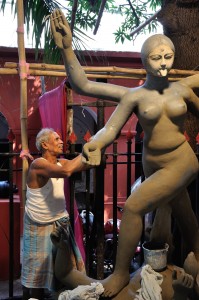 Once the figures of Kali and Shiva had been formed in straw, they moved them to the street outside of the Shovabazar Rajbari, just next to a tiny Shiva shrine. Over the next several days, a bamboo, cloth and paper pandal was built over and around the figures. I enjoyed observing this process immensely, because simply by being present in the situation, I became part of the rhythm of the street.
Once the figures of Kali and Shiva had been formed in straw, they moved them to the street outside of the Shovabazar Rajbari, just next to a tiny Shiva shrine. Over the next several days, a bamboo, cloth and paper pandal was built over and around the figures. I enjoyed observing this process immensely, because simply by being present in the situation, I became part of the rhythm of the street.
